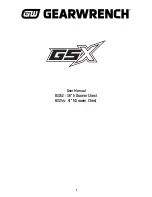
Rev. 1.50
13�
����st ��� �01�
Rev. 1.50
133
����st ��� �01�
HT66F0175/HT66F0185
A/D Flash MCU with EEPROM
HT66F0175/HT66F0185
A/D Flash MCU with EEPROM
SIMC2 Register
Bit
7
6
5
4
3
2
1
0
Name
D�
D6
CKPOLB
CKEG
MLS
CSEN
WCOL
TRF
R/W
R/W
R/W
R/W
R/W
R/W
R/W
R/W
R/W
POR
0
0
0
0
0
0
0
0
Bit 7~6
Undefined bits
These bits can be read or written by the application program.
Bit 5
CKPOLB
: SPI clock line base condition selection
0: The SCK line will be high when the clock is inactive.
1: The SCK line will be low when the clock is inactive.
The CKPOLB bit determines the base condition of the clock line, if the bit is high,
then the SCK line will be low when the clock is inactive. When the CKPOLB bit is
low, then the SCK line will be high when the clock is inactive.
Bit 4
CKEG
: SPI SCK clock active edge type selection
CKPOLB=0
0: SCK is high base level and data capture at SCK rising edge
1: SCK is high base level and data capture at SCK falling edge
CKPOLB=1
0: SCK is low base level and data capture at SCK falling edge
1: SCK is low base level and data capture at SCK rising edge
The CKEG and CKPOLB bits are used to setup the way that the clock signal outputs
and inputs data on the SPI bus. These two bits must be configured before data transfer
is executed otherwise an erroneous clock edge may be generated. The CKPOLB bit
determines the base condition of the clock line, if the bit is high, then the SCK line
will be low when the clock is inactive. When the CKPOLB bit is low, then the SCK
line will be high when the clock is inactive. The CKEG bit determines active clock
edge type which depends upon the condition of CKPOLB bit.
Bit 3
MLS
: SPI data shift order
0: LSB first
1: MSB first
This is the data shift select bit and is used to select how the data is transferred, either
MSB or LSB first. Setting the bit high will select MSB first and low for LSB first.
Bit 2
CSEN
: SPI SCS pin control
0: Disable
1: Enable
The CSEN bit is used as an enable/disable for the SCS pin. If this bit is low, then the
SCS pin will be disabled and placed into a floating condition. If the bit is high, the SCS
pin will be enabled and used as a select pin.
Bit 1
WCOL
: SPI write collision flag
0: No collision
1: Collision
The WCOL flag is used to detect whether a data collision has occurred or not. If this
bit is high, it means that data has been attempted to be written to the SIMD register
duting a data transfer operation. This writing operation will be ignored if data is being
transferred. This bit can be cleared by the application program.
Bit 0
TRF
: SPI Transmit/Receive complete flag
0: SPI data is being transferred
1: SPI data transfer is completed
The TRF bit is the Transmit/Receive Complete flag and is set to 1 automatically when
an SPI data transfer is completed, but must cleared to 0 by the application program. It
can be used to generate an interrupt.
















































